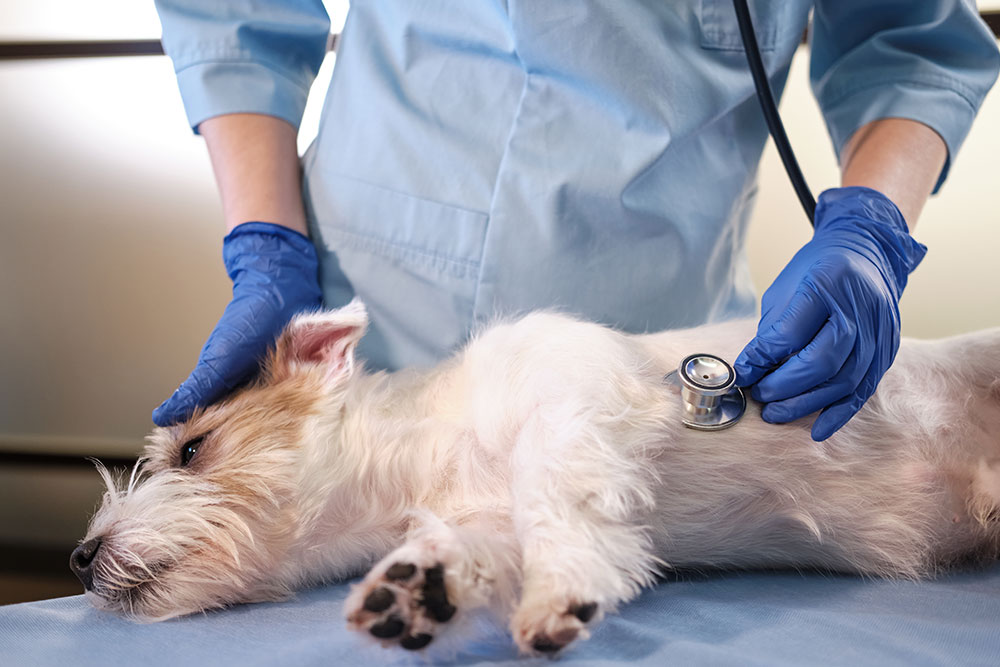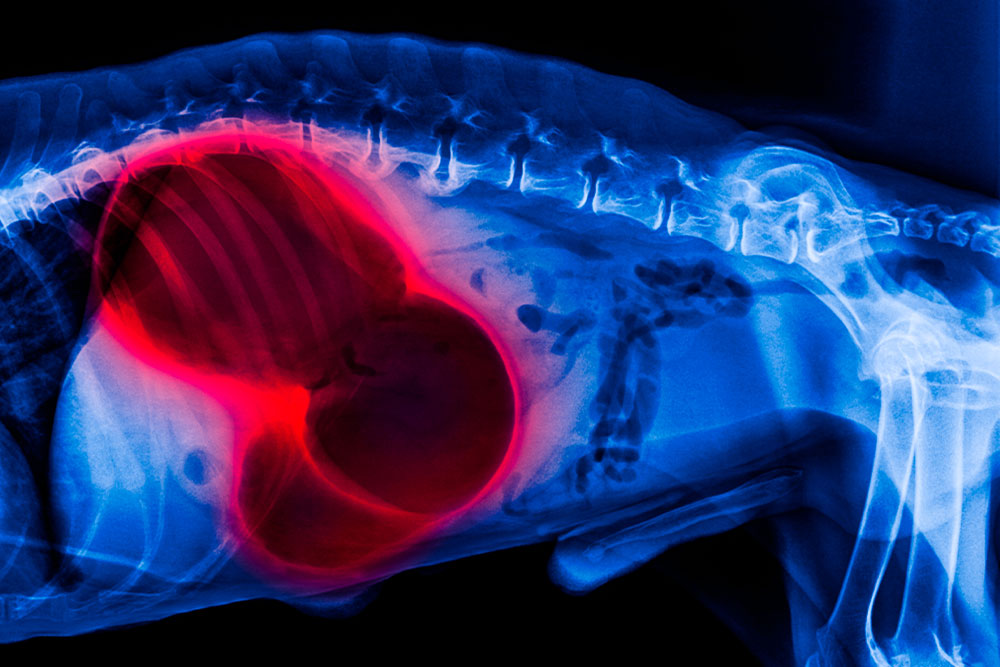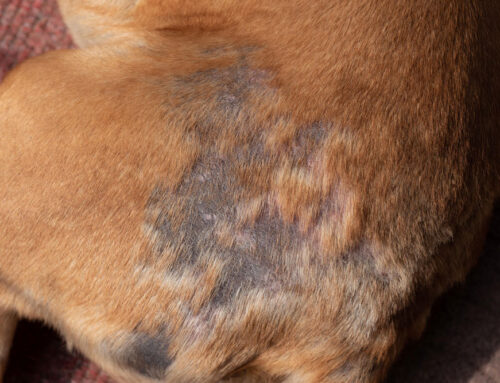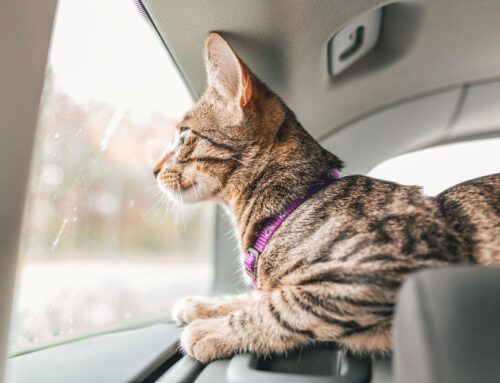GDV in Dogs: Recognizing the Signs of Bloat- A Life-Threatening Emergency
Seeing your dog suddenly uncomfortable, anxious, or in pain is one of the most stressful experiences a pet owner can face. When the cause is bloat, medically known as Gastric Dilatation-Volvulus (GDV), every moment counts. Understanding how GDV happens, which dogs are most at risk, and what early warning signs look like can help owners make fast, life-saving decisions.
At Twin Maples Veterinary Hospital in Dayton, Ohio, the goal is to empower you with practical information and support, before an emergency strikes.
What Is GDV and Why Is It So Dangerous?
Bloat is not just a bloated stomach. In dogs, GDV occurs when the stomach fills with gas or food and twists on itself. This twist cuts off blood flow to the stomach and other organs, causing tissue damage, shock, and even death if left untreated. Without immediate veterinary care, GDV can progress within hours.
The only solution for a twisted stomach is emergency surgery. The twist, known as volvulus, is what turns regular bloat into a medical crisis. More details on how this condition develops are available in this ACVS guide on GDV.
Risk Factors for Bloat in Dogs
There is no single cause for GDV, but certain factors increase risk:
| Risk Factor | Why It Matters |
|---|---|
| Breed | Large, deep-chested breeds like Great Danes, German Shepherds, and Standard Poodles are more prone. Breed-specific health risks can help you assess your dog’s risk level. |
| Age | Older dogs face a higher risk. |
| Eating Habits | Eating one large meal daily or gulping food increases gas buildup. |
| Exercise Timing | Running or rough play immediately after meals adds risk. |
| Stress and Anxiety | Changes in routine or high stress levels may contribute. |
Early Signs: Subtle but Important
Recognizing the first signs can mean the difference between life and loss. Owners sometimes mistake mild symptoms for indigestion, but prompt action is critical.
Watch for these early signs:
- Restlessness and pacing, unable to settle
- Excessive drooling or foamy saliva
- Repeated attempts to vomit, but nothing comes up
- Distended or tight abdomen
- Acting anxious or looking at the belly
When GDV Progresses: Emergency Indicators
If these symptoms escalate, a dog may show:
- Rapid, shallow breathing
- Whining, panting, or appearing in visible distress
- Weakness, staggering, or collapse
- Pale gums and rapid heart rate
- Cold legs or paws due to poor circulation
Any of these advanced signs means an emergency vet visit is needed immediately. The AVMA’s emergency care guide has more details on urgent situations.
How GDV Is Diagnosed

When gastric dilatation-volvulus (GDV) is suspected, the team at Twin Maples Veterinary Hospital acts fast. Time is critical, and early intervention can mean the difference between life and death. The diagnostic process begins with a thorough physical exam. Veterinarians often note a swollen, firm abdomen that feels tight—almost like a drum. Dogs may show signs of severe discomfort or restlessness, and in many cases, retching without producing anything.
Abdominal X-rays are used to confirm the presence of GDV. They often reveal the telltale “double bubble” pattern—gas trapped in both sections of the twisted stomach. Bloodwork is also run to assess organ function and determine whether shock or tissue damage is already underway. These results guide the next steps and help the team understand how far the condition has progressed.
What Happens Next: Treatment for Bloat
Treatment begins immediately, starting with stabilization. Dogs are placed on IV fluids to restore circulation and support blood pressure, as shock is a common and life-threatening complication of GDV. Pain management is also a priority, as this condition causes intense abdominal pain and distress.
Decompression follows, typically using a stomach tube to release the built-up gas. In cases where a tube can’t pass due to twisting, a needle may be used through the abdominal wall to relieve pressure.
Once the dog is stable enough, emergency surgery is performed. The veterinarian carefully untwists the stomach, assesses the health of the tissue, and removes any sections that may have been damaged by lack of blood flow. A gastropexy is usually performed at this stage—a surgical procedure that tacks the stomach in place to help prevent future episodes. For dogs at higher risk of GDV, a preventive gastropexy may even be recommended before any symptoms occur.
What Recovery Looks Like
Recovery from GDV surgery requires close monitoring and careful aftercare. Most dogs remain hospitalized for several days, during which they are closely observed for signs of infection, heart irregularities, or recurring abdominal swelling. Once home, they begin a gradual return to eating and drinking, starting with small, frequent meals under veterinary guidance.
Activity must be restricted for several weeks to allow healing—no running, jumping, or rough play during this time. Follow-up visits are essential to ensure the incision is healing well and that there are no lingering complications.
Owners play a vital role in this phase of recovery. Watching for changes in appetite, behavior, or energy level and keeping in touch with the care team ensures the best possible outcome. With timely treatment and diligent aftercare, many dogs go on to live full, happy lives post-GDV.
Can Bloat Be Prevented?
While GDV cannot be entirely prevented, these strategies can reduce the risk:
- Feed two or more small meals daily instead of one large meal.
- Use slow-feed bowls for dogs that eat too quickly.
- Limit exercise and excitement before and after meals.
- Provide a calm environment to reduce stress.
- For high-risk breeds, discuss a preventive gastropexy with your veterinarian.
Frequently Asked Questions About Bloat
Can bloat happen more than once? Yes. Dogs that have had GDV are at higher risk for recurrence without a gastropexy.
Is surgery always needed? If the stomach has twisted, surgery is the only option to correct the twist and save the dog’s life.
What is the survival rate? With early treatment, survival rates improve significantly. Without surgery, the outcome is almost always fatal.
Should all large dogs get preventive gastropexy? It depends on breed, age, and lifestyle. The team at Twin Maples Veterinary Hospital can help assess individual risk factors.
Trust Your Instincts: Know When to Act
Seeing a dog in distress is scary, but staying informed helps owners make decisions with confidence. Knowing the signs, acting fast, and having a trusted veterinary team ready can make all the difference.
The team at Twin Maples Veterinary Hospital is here for emergency care and preventive guidance. For questions about GDV, breed-specific risks, or surgery options, contact us today. Together, it is possible to protect your dog’s health and keep those wagging tails safe for years to come.









Leave A Comment